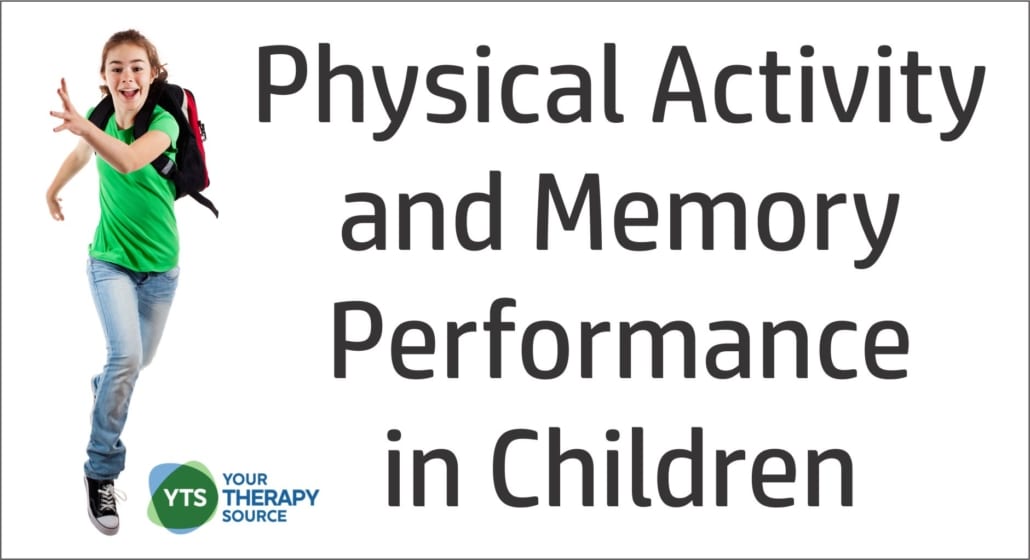Physical Activity and Memory Performance in Children

A recent article in the Psychology of Sports and Exercise reported on a study examing the effects of specifically designed physical activities on children’s foreign language vocabulary learning and attentional performance. The researchers examined physical activity and memory performance in children.
Methodology of the Study on Physical Activity and Memory Performance in Children
The participants included 104 children, 8-10 years old, who were divided into three groups:
- an embodied learning condition consisting of task-relevant physical activities.
- a physical activity condition involving task-irrelevant physical activities.
- a control condition consisting of a sedentary teaching style.
The program lasted 2 weeks with four learning lessons. The students had to learn 20 foreign language words.
Each child was tested on their memory performance after completion of the program and on their focused attention immediately after one learning session.
Results on the Study on Physical Activity and Memory Performance
Following the 2 week program and data analysis the results indicated the following:
- both the embodied learning and the physical activity condition improved children’s memory performance.
- the children enjoyed both physically active learning sessions more than the sedentary lessons.
- the children’s focused attention, however, did not differ between the three conditions.
The researchers recommended including physical activities during the school day.
Resources for Physical Activity in the Classroom

Movement Flashcards – Movement Flashcards digital download includes 10 aerobic exercises with flashcards templates. Students can get physical activity while reviewing material. The 10 aerobic activities include: run in place, jumping, hopping, squats, lunges, skipping, twists, cross crawls, jumping jacks and marching. Each page includes a picture image of the aerobic exercise along with a blank template to type in 18 flashcards. You choose what to work on for academic material. FIND OUT MORE ABOUT THE MOVEMENT FLASHCARDS HERE.
Resources for Memory Skills

The Working Memory, Hemisphere Integration and Attention Building Bundle includes 2 digital downloads that offer cognitive remedial tools to strengthen working memory, attentional skills, mental flexibility, and processing speed. The fun NO PREP activities have been created by Dr. Erica Warren, a learning specialist, and educational therapist. FIND OUT MORE.
Reference
Reference: Schmidt, M., Benzing, V., Wallman-Jones, A., Mavilidi, M. F., Lubans, D. R., & Paas, F. (2019). Embodied learning in the classroom: Effects on primary school children’s attention and foreign language vocabulary learning. Psychology of Sport and Exercise, 43, 45-54.



